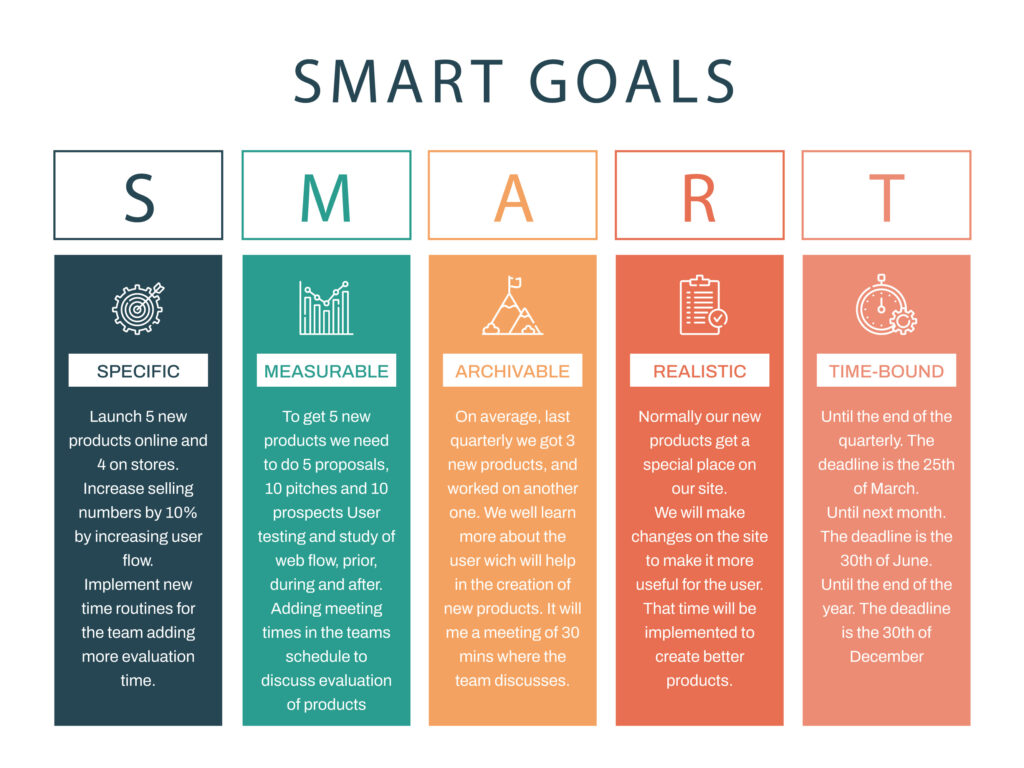In today’s world, trends are fast to come and go, so how can you make sure your gym is always buzzing with people? One way to ensure your business stays relevant is to utilize some gym marketing strategies.
Different advertisements are all around us, and many people think they are immune to their influence. However, they couldn’t be more wrong. With the right strategy, you can significantly impact the attitude and behavior of the targeted audience.
But in order to help you create the perfect gym marketing strategy for your facility you must first understand what gym marketing actually is.
What is Gym Marketing, and Why is It so Important?
Gym marketing refers to different strategies, activities, and tactics used to promote a fitness center. It consists of digital and traditional marketing strategies, with the aim of raising awareness, attracting new members, and retaining existing ones.
Did you know that member retention is the biggest pain point of any gym business? But with the right gym marketing plan, it doesn’t have to be anymore.
Make use of all digital channels, such as social media, email, and SEO-optimized content. However, don’t forget to include different promotional events, flyers, and local advertising.
The ultimate goal is to reach out to potential gym members and convince them that your gym is the perfect place for their fitness journey.
Understanding the Gym Industry
To create the perfect marketing strategy for your gym, we must examine current trends in the industry. With a rapidly changing and ever-evolving landscape, new problems need to be solved.
Latest industry trends
Virtual fitness classes
Virtual fitness classes are online exercise sessions that can be accessed remotely via the internet. These classes allow individuals to participate in fitness activities from the comfort of their own homes or any location with internet access.
Some people don’t like going to the gym or may be anxious about using the equipment for the first time. So, why not create virtual classes they can easily follow from their own living rooms?
Stay-at-home parents, busy professionals, or frequent travelers, to name a few, will most likely opt for this type of exercise. Getting on board with this trend can open a market of whole new people for your gym business.

Image by senivpetro on Freepik
Hybrid gym membership
Hybrid gym membership allows clients to combine in-gym and virtual experiences. This provides them with flexibility and convenience, ensuring they will stick to a workout schedule and be loyal to your gym.
Another benefit is that this trend caters to a wide range of crowds without requiring gyms to introduce additional services.
Personalized training sessions
Personalized training sessions, also known as one-on-one training or individualized coaching, involve working with a fitness professional to create a tailored workout program that specifically addresses your unique goals, needs, and abilities.
Personal training sessions have always been a thing; however, now they are more popular than ever. People understand that exercise isn’t one of those one-size-fits-all solutions, so they want a personalized approach to reach their fitness goals. One-on-one coaching lets members receive personalized advice, guidance, and motivation, making them into loyal clientele for your business.
Boutique fitness studio
A boutique fitness studio is a facility providing a unique niche experience. Yoga, cycling, reformer pilates, or HIIT studios are all great examples of gyms catering to people who enjoy a particular exercise module.
You don’t have to open a whole new facility, but can instead designate a specific area to the activity like cycling or pilates.
Flexible membership
This one may sound counterintuitive, but hear us out. Offering a flexible membership means giving people an option to pay for a single gym pass, which may sound bad as some people will choose to come only once. However, it still means they will come to check out your gym and maybe decide to become regular members.
Your members can also refer your gym to a friend, and now, with a one-pass ticket, they can even come for a session together.
Performing proper market analysis
As we have showcased some of the industry trends, now would be a perfect moment to go over some marketing strategies for gyms and how to establish your own.
Marketing analysis is crucial for understanding your environment, identifying opportunities and threats, and developing effective advertising for gyms. But it can be confusing. So, to make this all easier for you, here is a quick step-by-step guide:
1. Define your objective
What’s the purpose of this examination? Are you looking to grow your clientele? Want to launch a new product, or is it something else? Setting up the objective helps you define what you want to achieve with your gym marketing campaigns and ensures you stay on the right track.
2. Understand your specific market
What’s the number of potential customers? Is the market growing? What are some of the current trends you can get on board with? Every market offers something different, so taking the time to understand how you fit in this picture is crucial for composing a well-thought-out marketing plan later on.
3. Look into your target audience
What’s their age, gender, income, occupation? What are their interests, values, and lifestyles? Identifying the target audience for gym marketing will help you understand how to showcase your gym effectively and what channels to use to get the best results.
4. Examine your competitors
What are their marketing strategies? How reasonable are their prices and products? What promotional activities do they perform? The best way to ensure you are offering something unique is to know what exactly your competitors are offering and what gaps you can fill.
Now that you’ve completed the analysis of all these factors, you can start building your distinctive gym marketing campaign.
Developing a Gym Marketing Strategy
No matter if you are just starting your gym business journey or are looking to increase the membership count, a proper marketing strategy can make all the difference in building a loyal fan base.
But how to market a gym the right way? One of the excellent techniques to use when setting up your marketing goals is SMART criteria. This acronym stands for:
- Specific (You should clearly define what you want to achieve)
- Measurable (Define how are you going to measure the progress)
- Achievable (Set a goal that is realistic given the current resources available)
- Relevant (The goal should align with your business objective and mission)
- Time-Bound (You should have a clear deadline to create a sense of urgency)

When using it in practice, it means that you should set a clear goal you want to achieve, such as increasing the membership number. You should also give it a percentage so you can measure it. Let’s say you want to increase your membership count by 15%. Is this realistic, and does it align with your mission? It most likely does, but make sure you also set a time frame for this goal. So, in order to define your goal using the SMART system, you should define it something like this:
“My goal is to increase gym memberships by 15% in the next six months.”
Defining your goals this way will help you see the next steps you should take and help you stay on the right track.
However, you should also include the specifics on how you plan on executing your plan. That’s why our next segment is dedicated to different marketing channels you can use.
Choosing the right marketing channels
Is your target audience Gen Z, who spends too much time on TikTok? Or are you trying to attract Millennials who are more fond of Instagram? Once you select the potential prospects for your gym, proper marketing channels will fall into place.
Nonetheless, using just one or two channels may limit the success of your business. Try to incorporate a few of them and see what works best for you. Here are different marketing routes you can take:
Social media
With social media's popularity increasing over the last decade, it makes perfect sense to mention it first. From middle-aged people to youngsters, almost everyone is glued to their phone or computer. But even though everything happens online, you may still be wondering how to promote a gym on social media the right way.
The first step is to include visuals of your gym facility, different educational fitness tips, and member testimonials to help you establish credibility and attract potential members. There is a huge emphasis on visual content, either in the form of short videos or before-and-after pictures. Take some photos during group sessions, ask your regulars about their thoughts, and include their quotes.
Your content should be eye-catching, so don’t just copy other people’s work if you want to see real results.
Email marketing
While there is a common misconception that people don’t read these sales emails, we are here to debunk this for you. This is a very cost-effective way to communicate directly with your clients. You can implement welcome emails, regular newsletters created using email newsletter templates, or different promotional emails.
One thing that differentiates read and unread emails is the subject line. Make sure you use something compelling so people feel tempted to see what’s inside.

Image by Ron Hoekstra from Pixabay
Content marketing
Taking the time to craft your own blog posts and other website content can set you miles apart from the competition. Many people search online for information regarding fitness, healthy habits, or recipes they can follow. Offering this content on your website can make them notice your brand. This brand awareness will play a huge part when they decide to start going to the gym.
You just need to make sure your content is search engine optimized so it has a higher chance of appearing on the first few pages on Google.
Referral program
Word of mouth is one of the most powerful marketing tools, so leveraging different referral programs may be the best way to increase membership. Encourage members to bring their friends along, but don’t forget to show appreciation for their loyalty by offering different discounts or special gifts.
This is a cost-effective strategy that is easily measurable. Just make sure your rewards are appealing so people participate.
Pay-per-click Advertising (PPC)
PPC is a highly effective digital marketing strategy that works through targeted online ads. The good thing is that you pay only when someone clicks on the ad, making this a cost-efficient way to drive traffic to your website. You can choose from Google Ads, Facebook Ads, Instagram Ads, etc. Place them on the platform your targeted audience uses the most and design compelling content with a clear call to action.
PPC ads can be easily adjusted, so once you have some insight into their performance, feel free to alter them to reach even bigger audiences. The budget is completely up to you, making this a great marketing channel for new gyms.
Events
As we mentioned, not everybody is online, even if your target audience is Gen Z. Preparing different in-person events can help you attract this missing crowd. Events also allow people to experience your gym’s services firsthand and interact with other members and trainers.
These gym promotions may be a bit pricier, but if you want to get the most out of them, plan them in advance and post about them on your socials. Considering the crowd you want to reach, it would also be a good idea to invest in some flyers and posters you can hang in your neighborhood.
Seamless Booking, Better Marketing & More Clients with Trafft
Managing your bookings, calendars, clients, and employees, and enhancing your marketing efforts has never been easier. With Trafft, you can do all of this and more!
- Provide a seamless booking experience for your gym members and keep your gym available for bookings 24/7.
- Integrate Trafft with your calendars and ensure you stay on top of your gym sessions at all times.
- Take advantage of Trafft’s seamless integration with SendFox and Mailchimp to communicate directly with your clients. From creating the perfect email campaign to automating the whole process, Trafft lets you do it all in just a few minutes.
- Want to make your community more engaged? Utilize Whatsapp integration to improve communication with your members and reduce no-shows.
- With its custom field feature, you can now easily gather more information about your clients and improve your services down the road.
Visit Trafft’s sign-up page and transform your gym business today!
Creating Your Unique Selling Point
When you look at the gym offerings around you, what’s making you different from the bunch? If you want to grab people's attention, you must give them something they can’t get elsewhere.
Don’t worry; this doesn’t mean you have to reinvent the wheel. Just take a look at something members would want from their gym. Your USP could be the strong community your gym offers or experienced trainers. But be sure to keep it easily understandable. The brand identity you want to create relies heavily on this key point.
Gym Marketing Ideas
Coming up with your own gym marketing ideas may be challenging, especially with all the information you just got. Like always, we've got you covered. Below is a list of a few additional gym promotion ideas you can implement. Don’t forget to measure the success of each one you decide to try so you can see what works for your business.
- Outdoor Bootcamp
- Weight Loss Challenges
- Gym merchandise
- Yoga retreats
- Birthday rewards
- Gym anniversary celebrations
- Fitness challenges on social media
Budgeting for Gym Marketing
Now that we have covered gym marketing from top to bottom, we are sure you still have a few questions. The first one probably is, how much do gyms spend on marketing? According to Active Management, gyms usually spend anywhere from 5% to 15% of their revenue on this endeavor.
While we understand this is a vast range, unfortunately, it’s practically impossible to give you an exact number. Gym marketing costs can vary depending on various factors, such as the size of the gym, its location, competition level, target audience, and marketing goals.
As with most things, this is not a one-size-fits-all, so calculate your expenses every step of the way. When allocating your budget, make sure you cover all the necessary marketing channels but don’t go overboard.
Budgeting takes time and can be a tremendous task if you don’t know where to start. That’s why we prepared this gym start-up costs guide to help you create solid ground.
Conclusion
In conclusion, mastering different marketing strategies is essential for navigating the competitive landscape of the fitness industry. When crafting your perfect approach, keep in mind that there isn’t a universal solution. Find a strategy that works best for your brand.
Throughout this guide, we explored some of the latest industry trends and gave you a rundown of some of the best marketing channels you can utilize. However, don’t forget the importance of proper market analysis, as it is a cornerstone in making this whole thing work.
Gym marketing is one of those endeavors that requires both creativity and strategic planning, so don’t hesitate to ask for help if you ever feel overwhelmed.
On the other hand, if you feel ready to dive in but need a little push in the right direction, here are our fitness and health advertisement examples to inspire you.







